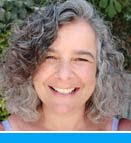Enot Tsukim Nature Reserve or En Fashkha, as it is also known (Fashkha means split or broken), is the lowest nature reserve in the world. Located on the northwestern shore of the Dead Sea, it is named for the En Fashkha spring, a spring of brackish water (semi-salty water) in the area. The source of the spring water in the reserve is rain water that falls on the Judean Mountain range which seeps downward and emerges in the area of the nature reserve. This water is rich in minerals and gets some of its saline content due to the close proximity to the Dead Sea.
Enot Tsukim Nature Reserve is divided into three areas: the northern "closed reserve", which is completely closed to visitors, except for scientists, to protect the native flora and fauna; the central "visitors reserve" which contains wading and swimming pools filled by natural spring water; and the southern "hidden reserve", which can be visited only on tours guided by Israel Nature and Parks Authority (INPA) guides. The central "visitors reserve" also contains an archaeological site from the Second Temple period.
We visited the nature reserve during Chol HaMoed Sukkot and, though crowded, we found it to be a really great place to spend the day. We started off by taking a walk around the "visitors reserve", enjoying the wading pools, all fed by a natural spring which keeps the water temperature down, and the stream that sits among shaded bamboo trees. Enot Tsukim has over 150 springs, of varying degrees of saltiness. These springs provide for the variety of fauna and flora which can be found in the reserve. The fauna include jackals, wolves, foxes, hyenas and leopards. The flora include date palm trees, reeds, bulrushes and tamarisk trees, though none of the trees were planted here. Instead, rangers assume that they stand where date-loving jackals and birds left droppings full of date seeds. We then took a break at the large picnic area, where we barbecued and the kids swam in the "deep" Date Pool.
We had booked ourselves on to the 3pm tour of the "hidden reserve". Our guide took us to the first station, the archaeological site En Fashkha. From diggings in the site – the first one in 1958, and after that in 2001 – it seems that this was an agricultural farm that began in the first century B.C.E. There are the remains of a house, a yard for raising sheep and goats, and an industrial zone with water canals, water reservoir, covered spaces including storage bins and a ritual bath. Professor Yizhar Hirschfeld of the Hebrew University of Jerusalem, who completed his excavation of the area in 2001, believes that balsam perfume (known in the Talmud as shemen afarsemon) was produced on this farm.
We continued with the tour, entering the "hidden reserve" through a locked gate, then following a path, thick with vegetation, past flowing tributaries, pools that fill up from spring water and which are home to a unique population of St. Peter’s fish, and past signs marking the level of the Dead Sea in different years (the last being 1991). Sadly, the Dead Sea has been steadily shrinking for decades and, if the sea level continues to shrink this way, it will take around 40 years until the Dead Sea will be smaller than the Kinneret (Sea of Galilee). The fall in sea level can be explained by a few reasons: evaporation due to heat, scarce input of external water, and the Dead Sea Works water pumping that use the Dead Sea for production of potash.
Our guide showed us a nest built by a Dead Sea sparrow, and pointed out the Sodom Apple plant, a flowering plant of northern Africa which bears poisonous fruit, above. We even saw one of the elusive donkeys which live in the reserve, brought in 20 years ago to control the growth of common reed that overruns other plants.
At the end of the tour, the kids went back for another dip in the pool. They had enjoyed a great day out, and I'd managed to squeeze in an "educational tour" without them really noticing!
An historical aside, Ein Fashkha provided excellent cover for 32 Palmah troops on the Night of the Bridges in June 1946. In an action meant to cut Palestine off from the surrounding Arab countries, Palmahniks blew up the Allenby Bridge, over the Jordan River. Eleven bridges altogether were destroyed during the operation, part of a protest against the British policy of strangling Jewish immigration. After the blast, which was executed under heavy fire, Palmah soldiers managed to reach Ein Fashkha and hide out in the oasis’s wild brush.
Ein Fashkha fell into Israeli hands during the Six Day War. Recognizing its unique and special qualities, Israeli authorities declared it an official nature reserve and renamed it Enot Tsukim (Cliff Springs).




































2 comments:
so glad that a portion of it is preserved unless specially guided. the ruins are wonderful.
The landscape is beautiful. This looks like a great place to bring the kids and sneak in some learning. ;) I would be a little nervous about some of its fauna!
Post a Comment